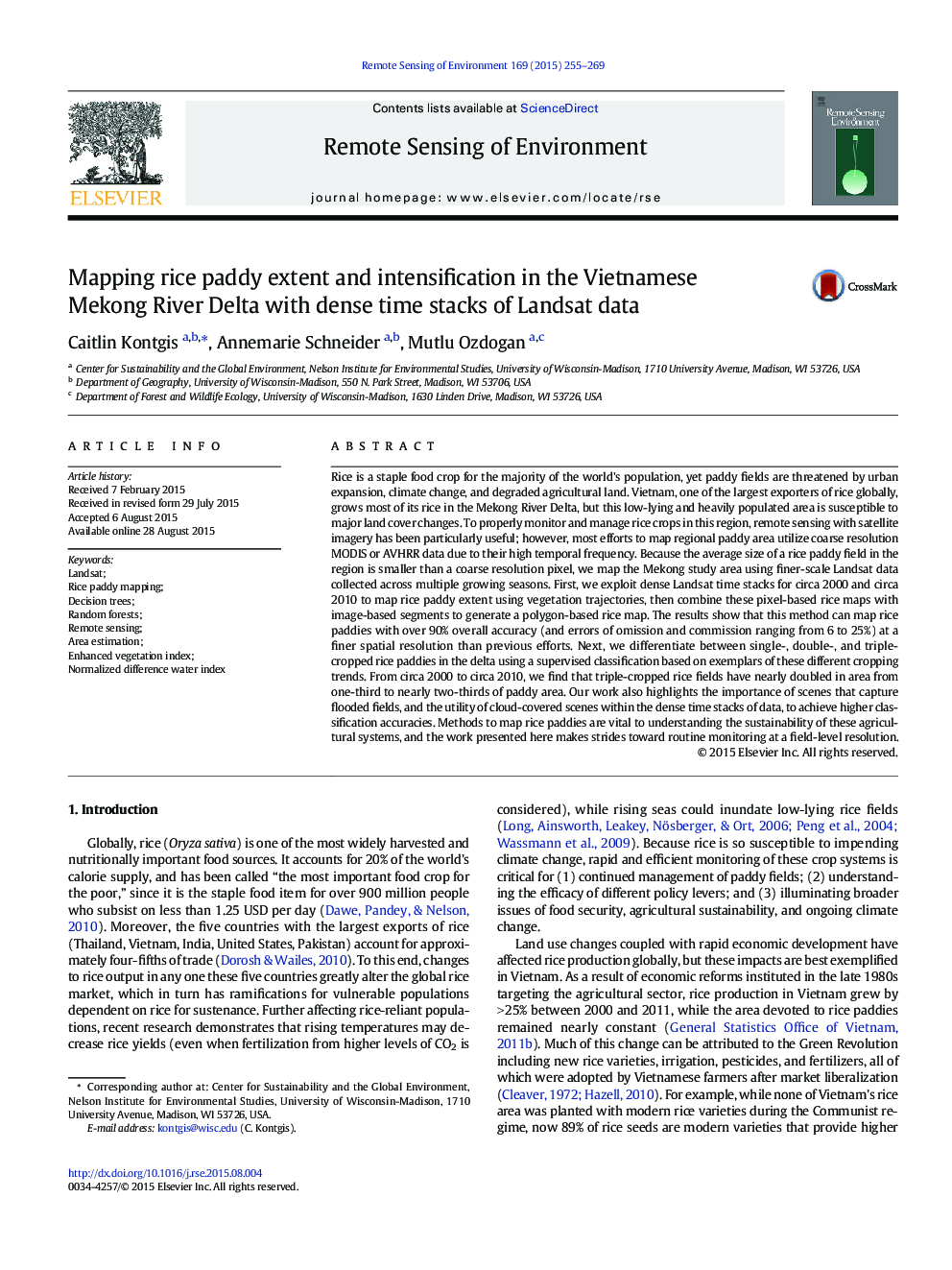| کد مقاله | کد نشریه | سال انتشار | مقاله انگلیسی | نسخه تمام متن |
|---|---|---|---|---|
| 6345826 | 1621231 | 2015 | 15 صفحه PDF | دانلود رایگان |
- Rice is mapped using dense stacks of Landsat data and object-oriented segmentation.
- Paddy area in the Mekong Delta shrunk by 500,000Â ha 2000-2010.
- In the Mekong Delta, rice switched from double- to triple-cropped fields, 2000-2010.
- Adjusting accuracies for area gives a complete picture of land cover changes.
- Flooded scenes are most important for rice paddy mapping, even if they are cloudy.
Rice is a staple food crop for the majority of the world's population, yet paddy fields are threatened by urban expansion, climate change, and degraded agricultural land. Vietnam, one of the largest exporters of rice globally, grows most of its rice in the Mekong River Delta, but this low-lying and heavily populated area is susceptible to major land cover changes. To properly monitor and manage rice crops in this region, remote sensing with satellite imagery has been particularly useful; however, most efforts to map regional paddy area utilize coarse resolution MODIS or AVHRR data due to their high temporal frequency. Because the average size of a rice paddy field in the region is smaller than a coarse resolution pixel, we map the Mekong study area using finer-scale Landsat data collected across multiple growing seasons. First, we exploit dense Landsat time stacks for circa 2000 and circa 2010 to map rice paddy extent using vegetation trajectories, then combine these pixel-based rice maps with image-based segments to generate a polygon-based rice map. The results show that this method can map rice paddies with over 90% overall accuracy (and errors of omission and commission ranging from 6 to 25%) at a finer spatial resolution than previous efforts. Next, we differentiate between single-, double-, and triple-cropped rice paddies in the delta using a supervised classification based on exemplars of these different cropping trends. From circa 2000 to circa 2010, we find that triple-cropped rice fields have nearly doubled in area from one-third to nearly two-thirds of paddy area. Our work also highlights the importance of scenes that capture flooded fields, and the utility of cloud-covered scenes within the dense time stacks of data, to achieve higher classification accuracies. Methods to map rice paddies are vital to understanding the sustainability of these agricultural systems, and the work presented here makes strides toward routine monitoring at a field-level resolution.
Journal: Remote Sensing of Environment - Volume 169, November 2015, Pages 255-269
